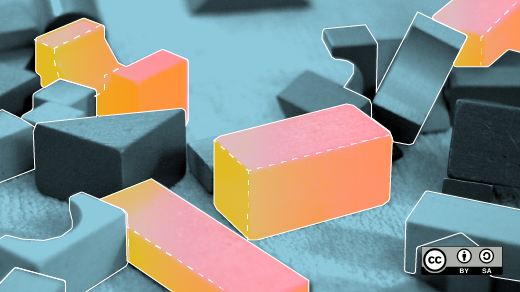mirror of
https://github.com/LCTT/TranslateProject.git
synced 2025-01-16 22:42:21 +08:00
78 lines
4.6 KiB
Markdown
78 lines
4.6 KiB
Markdown
translating---geekpi
|
|
|
|
Learn Python programming the easy way with EduBlocks
|
|
======
|
|
|
|

|
|
|
|
If you are you looking for a way to move your students (or yourself) from programming in [Scratch][1] to learning [Python][2], I recommend you look into [EduBlocks][3]. It brings a familiar drag-and-drop graphical user interface (GUI) to Python 3 programming.
|
|
|
|
One of the barriers when transitioning from Scratch to Python is the absence of the drag-and-drop GUI that has made Scratch the go-to application in K-12 schools. EduBlocks' drag-and-drop version of Python 3 changes that paradigm. It aims to "help teachers to introduce text-based programming languages, like Python, to children at an earlier age."
|
|
|
|
The hardware requirements for EduBlocks are quite modest—a Raspberry Pi and an internet connection—and should be available in many classrooms.
|
|
|
|
EduBlocks was developed by Joshua Lowe, a 14-year-old Python developer from the United Kingdom. I saw Joshua demonstrate his project at [PyCon 2018][4] in May 2018.
|
|
|
|
### Getting started
|
|
|
|
It's easy to install EduBlocks. The website provides clear installation instructions, and you can find detailed screenshots in the project's [GitHub][5] repository.
|
|
|
|
Install EduBlocks from the Raspberry Pi command line by issuing the following command:
|
|
```
|
|
curl -sSL get.edublocks.org | bash
|
|
|
|
```
|
|
|
|
### Programming EduBlocks
|
|
|
|
Once the installation is complete, launch EduBlocks from either the desktop shortcut or the Programming menu on the Raspberry Pi.
|
|
|
|

|
|
|
|
Once you launch the application, you can start creating Python 3 code with EduBlocks' drag-and-drop interface. Its menus are clearly labeled. You can start with sample code by clicking the **Samples** menu button. You can also choose a different color scheme for your programming palette by clicking **Theme**. With the **Save** menu, you can save your code as you work, then **Download** your Python code. Click **Run** to execute and test your code.
|
|
|
|
You can see your code by clicking the **Blockly** button at the far right. It allows you to toggle between the "Blockly" interface and the normal Python code view (as you would see in any other Python editor).
|
|
|
|

|
|
|
|
EduBlocks comes with a range of code libraries, including [EduPython][6], [Minecraft][7], [Sonic Pi][8], [GPIO Zero][9], and [Sense Hat][10].
|
|
|
|
### Learning and support
|
|
|
|
The project maintains a [learning portal][11] with tutorials and other resources for easily [hacking][12] the version of Minecraft that comes with Raspberry Pi, programming the GPIOZero and Sonic Pi, and controlling LEDs with the Micro:bit code editor. Support for EduBlocks is available on Twitter [@edu_blocks][13] and [@all_about_code][14] and through [email][15].
|
|
|
|
For a deeper dive, you can access EduBlocks' source code on [GitHub][16]; the application is [licensed][17] under GNU Affero General Public License v3.0. EduBlocks' creators (project lead [Joshua Lowe][18] and fellow developers [Chris Dell][19] and [Les Pounder][20]) want it to be a community project and invite people to open issues, provide feedback, and submit pull requests to add features or fixes to the project.
|
|
|
|
--------------------------------------------------------------------------------
|
|
|
|
via: https://opensource.com/article/18/8/edublocks
|
|
|
|
作者:[Don Watkins][a]
|
|
选题:[lujun9972](https://github.com/lujun9972)
|
|
译者:[译者ID](https://github.com/译者ID)
|
|
校对:[校对者ID](https://github.com/校对者ID)
|
|
|
|
本文由 [LCTT](https://github.com/LCTT/TranslateProject) 原创编译,[Linux中国](https://linux.cn/) 荣誉推出
|
|
|
|
[a]:https://opensource.com/users/don-watkins
|
|
[1]:https://scratch.mit.edu/
|
|
[2]:https://www.python.org/
|
|
[3]:https://edublocks.org/
|
|
[4]:https://us.pycon.org/2018/about/
|
|
[5]:https://github.com/AllAboutCode/EduBlocks
|
|
[6]:https://edupython.tuxfamily.org/
|
|
[7]:https://minecraft.net/en-us/edition/pi/
|
|
[8]:https://sonic-pi.net/
|
|
[9]:https://gpiozero.readthedocs.io/en/stable/
|
|
[10]:https://www.raspberrypi.org/products/sense-hat/
|
|
[11]:https://edublocks.org/learn.html
|
|
[12]:https://edublocks.org/resources/1.pdf
|
|
[13]:https://twitter.com/edu_blocks?lang=en
|
|
[14]:https://twitter.com/all_about_code
|
|
[15]:mailto:support@edublocks.org
|
|
[16]:https://github.com/allaboutcode/edublocks
|
|
[17]:https://github.com/AllAboutCode/EduBlocks/blob/tarball-install/LICENSE
|
|
[18]:https://github.com/JoshuaLowe1002
|
|
[19]:https://twitter.com/cjdell?lang=en
|
|
[20]:https://twitter.com/biglesp?lang=en
|